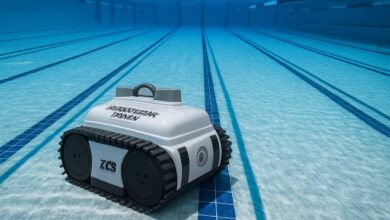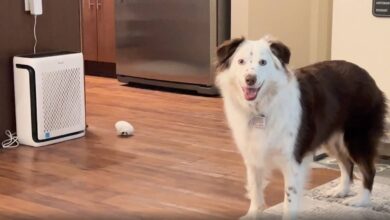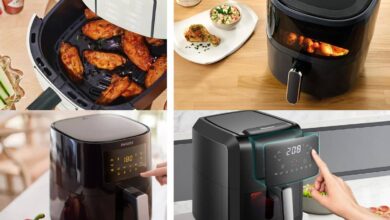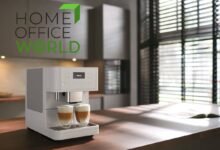Why Are Robot Vacuums So Expensive?
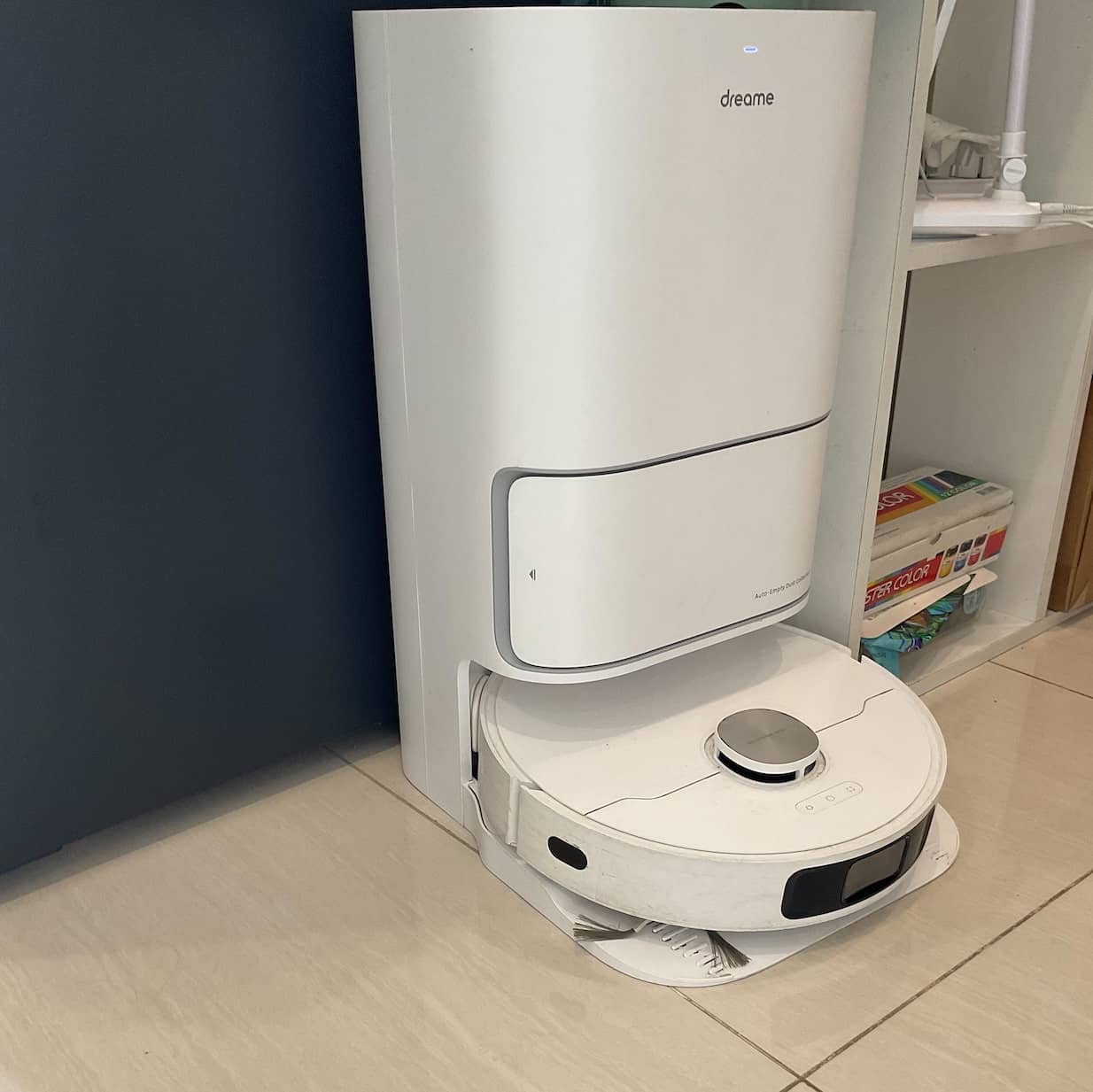
When shopping for a robot vacuum, you may be surprised by the price. You’re probably thinking, “What the heck?”
This is nothing new! A good standard hand-held vacuum, either upright or cordless (such as Bissell 2252), might cost around $100-200. It vacuums extremely well on both hard floors and carpets, and it is lightweight. The attachment also works well on different surfaces, making the vacuum ideal for proper cleaning.
But when it comes to robot vacuums at similar price, the quality may vary depending on the manufacturer. Sometimes you get decent carpet vacuuming ability but poor in vacuuming hard floor. That could also happen vice versa. You may also miss out on some features in order to reduce the production costs. Basically, you won’t get an all-around or even perfect robot vacuum at this price point.
That is one reason why people think robot vacuums are so expensive. When compared to a standard corded upright vacuum, robot vacuums lack many useful features. You will notice that the price point for reaching the top of the line for robot vacuums is huge. A high-end with good value robot vacuum can cost up to $2000. Meanwhile, the premium model for upright vacuum with a lot of modern features costs up to $500.
With such a wide range of prices, it is not a surprise that robot vacuums are considered expensive. If you are curious, we will look into what exactly is causing the price increase from the perspective of the manufacturers. This will explain why the device can be costly and whether it is a good investment for you or not.
Hardware Development
The first thing you might notice about a robot vacuum is how sophisticated it is. It includes various sensors, cameras, automation features, and many others. The robot can perform a lot of different tasks automatically, including vacuuming and mopping. Furthermore, you can customize its behavior to your specific needs and use scenarios. All of these tasks can be completed without you leaving your chair.
1. Suctioning Power
A vacuum with powerful suction power is important to effectively vacuum both carpet and hardwood floors. Currently, most high-end robot vacuums can reach up to 5100 Pascal, and this number is increasing with each new generation. Take for example the original Roomba. A YouTube channel called Vacuum Wars conducted a comparison test between the 2002 Roomba and the 2019 S9+ Roomba. Roomba S9+ produces significantly more airflow, which indicates vacuuming power. This indicates a significant development that doesn’t come cheaply.
2. The Navigation Sensors
Over the last few decades, robot vacuums have developed dramatically. The earlier model included a random navigation system known for people as bump and turn. This random movement is definitely not the best, but it works extremely well in a small space. Yet, the room must be pre-cleaned to remove cables, socks, and even rugs from the floor, as the robot may get stuck when passing on those things. Furthermore, older vacuum robots are more prone to falling because they lack a sensor to detect heights.
Because of the previous issues, manufacturers started to equip innovative sensor and motor-software combinations in their products. Let’s take a look at some of the modern sensors used in vacuum robots, according to Robot Report.
- Ultrasonic Time-of-Flight Sensor
This sensor works regardless of the lighting in the room. Some sensors, such as those equipped with cameras, rely on a bright light to capture the entire room situation. This sensor reduces the need for sufficient light and is commonly used to detect objects such as pets, toys, and a lot of other items that may obstruct the path of the device.
- Short-Range Ultrasonic Time-of-Flight Sensor
This sensor is commonly used in vacuum-mop combinations to detect the surface that is currently being cleaned. With this sensor, your device can automatically increase vacuuming power when cleaning rugs or carpets and lower the vacuuming power when cleaning hard floors.
Another feature is if your robot vacuum has two modes, vacuuming and mopping. When it detects a rug, it activates a mop pad riser mechanism to lift the pad. This will keep the wet and dirty mop pads from touching the carpet, leaving your carpet safe from being dirty because of touching the pads.
This sensor also allows the robot to detect cliffs or height differences. This may prevent the robot vacuum from tumbling over. It is also important to prevent the strange behavior of the device that can’t clean black carpets.
- VSLAM and LiDAR
The navigation system in a robot vacuum is important for achieving maximum cleaning efficiency. Among other sensors, VSLAM and LiDAR are the most important for mapping a home or building. VSLAM stands for Visual Simultaneous Localization and Mapping, while LiDAR stands for Light Detection and Ranging. LiDAR uses laser beams to measure the distance between the vacuum and the objects it hits. It is worth noting that LiDAR has blind spots because it is typically attached to the top of the unit.
They work together to create a map of your home by scanning it the first time it is deployed. You can then save if everything is fine or retry if you believe it didn’t map the area correctly. However, the sensors listed above are generally reliable so you shouldn’t worry about it.
VSLAM, unfortunately, is regarded as less superior to LiDAR for two reasons. For starters, it only works when there is enough lighting. It is using a camera, after all. Another reason is a concern for privacy. People are concerned that the data from the camera will be used and sold by third parties. Though manufacturers already inform the customers that their data will not be uploaded to an online server, some people believe they are still hiding something behind. As a result, the development of this sensor is not particularly welcome by users, even if it is more accurate and less expensive compared to LiDAR.
- Inertial Measurement Units
This sensor records the roll, pitch, and yaw of movement in both linear and rotational perspectives. This allows the robot to determine its current relative position based on previous movements. It can also turn the robot in the correct direction if there is an error. Since it can tell the position where the device is in, it can continue the unfinished work in case of a drained battery or manual user commands.
Typically, this sensor is automatically installed in a robot vacuum with LiDAR or VSLAM. However, it can also give more ‘intelligence’ for the vacuum with a random navigation system. It determines the location by combining the wheel’s rotation and inertial measurement from this sensor with object detection from the ToF sensor. This is basically an irreplaceable sensor for a smart vacuuming robot.
- Smart Speaker Microphone
Most modern robot vacuums support voice commands. This allows you to control the robot simply by saying specific voice commands. This works by routing your voice through your smart home system while it is linked to the device. Your voice will be received by the microphone and converted into a specific function in the machine, allowing the unit to execute your command. New models can even distinguish between a random voice and an actual voice command. This helps the robot work more efficiently.
- Embedded Motor Controller
The controller ensures that the wheels move in the correct direction and angle. The angle of turn is critical here to avoid getting stuck. A good sensor can differentiate the robot to 90 percent, whereas a common sensor only reaches 88 percent or lower. If the robot is not equipped with a good motor controller, it will not guide you in the right direction.
- Gyroscopes
A gyroscope is a tool that detects deviations from an object’s desired orientation using a swiftly rotating wheel or light beam. This sensor is commonly used in compasses, navigational instruments on ships and aircraft, and various steering-dependent devices such as torpedoes, spacecraft, ballistic missiles, and orbiting satellites. Notably, gyroscopes have been recently integrated into robot vacuums.
- Pressure Sensor
Robot vacuums use negative air pressure, which is useful because as explained in basic physics, air flows from high to low pressure. The amount of dust accumulated in the dust box is determined by measuring how air flows through the container with a pressure sensor. When the dustbin is empty, the air pressure inside stays constant. As dust accumulates or the filter clogs, the airflow slows down, resulting in a drop in air pressure within the dustbin.
To ensure accurate measurement, it is advised to use a differential pressure method that compares the air pressure inside the dustbin to that of the surrounding environment using a similar pressure sensor.
The sensor in a low-budget model is typically less accurate. Some people have complained that they received a notification that the bin is full even though there is still some space in it. In a high-end model, the docking station can transfer content from the waste bin to the waste container on the dock. This will need a connection between the device and the dock to assign the return-to-base command before proceeding to clean its contents and continuing the unfinished cleaning business.
- Auto Recharging
This sensor is very important to the automation of your robotic vacuum. The reason is that you need an extremely accurate reader for the current and voltage, both of them indicate battery capacity. This also determines the SoC (state of charge), forcing the robot to return to the docking station for recharging before the battery runs out.
For a robot with a low-capacity battery and a LiDAR navigation system, the auto-recharging feature will be really useful. That is because it saves progress before returning to the docking station and will resume when fully charged. Robots without LiDAR can’t do this because they will go wherever they want, missing the parts that it has not cleaned.
- Thermistors
This is a sensor designed to protect your robot vacuum. As you may have learned, robot vacuums, particularly the budget-friendly models, are prone to get tangled or stuck. When they do, they usually continue working until they are free of the situation. This makes them work harder, causing the components inside to heat up much faster. This is where the thermistor comes in to help monitor the temperature when it reaches an alarming level. When this happens, your vacuuming robot will stop working for a short period of time before correcting itself and requesting your assistance.
3. Obstacle Avoidance Sensors
Another important feature of a navigation sensor is the obstacle avoidance sensor. This keeps the device from hitting any objects, including the wall. Therefore, this feature is only available for units with smarter or more accurate navigation systems, such as LiDAR and VSLAM.
In general, smart robot vacuums have been trained on images found in a house, especially items that are frequently put on the floor, either intentionally or unintentionally. Toys, rugs, remote controls, gamepads, bottles, and a lot of other items can all be included. Some models include an AI processing unit that can learn and understand different types of information, such as distance, object name, and shape.
The data captured by LiDAR can be used to learn about the objects around the unit. However, it doesn’t tell the entire story because it has blind spots despite having the ability to see in the dark. To address this, the robot vacuum typically includes a camera in the front. This allows the device to gather more data about the objects in front of it.
Speaking of the camera, this technology is commonly called monocular or binocular vision, depending on how many cameras the robot is equipped with. Both allow the vacuum to automatically take and analyze the images they capture while attempting to understand them. However, the camera needs light to work properly. This is why it doesn’t work well in low-contrast or dark scenes. Low contrast scenes include a black carpet with black cables, which can cause even the most expensive robot vacuum to get stuck, specifically if it doesn’t have this technology equipped.
In addition to preventing bumping with LiDAR, the obstacle avoidance feature utilizes 3D ToF (Time of Flight). This technology generates infrared light pulses that can be reflected by the object it is targeted at. The time it takes is calculated, and the robot can then visualize the depth, height, and size of specific objects. Unfortunately, most of the time this doesn’t work for small or thin objects.
Now, some advanced vacuum robots include 3D structured light sensors. By projecting a specific light pattern, the robot can analyze the resulting light distortion to generate 3D mapping data. This produces a high-resolution image that the robot can understand more clearly. However, it doesn’t work well with transparent and reflective materials.
Finally, some robots take advantage of a combination of sensors, including infrared and ToF to generate a 3D map. This provides a highly detailed 3D view of a house, allowing the robot to understand it in the same way that humans do. This feature, called TrueDetect 3D by Ecovacs, can be found in premium robot vacuums that allows them to avoid obstacles easily.
It is worth noting that technology such as LiDAR and other infrared sensors can be installed individually in a robot vacuum. Adding one means adding a specific feature from the sensor it is associated with. This works the other way around. If a vacuum robot lacks a sensor, you may miss out on a specific or expected feature. This means that an excellent device with multiple functionalities should have a combination of those sensors in it.
The problem is that as you add more sensors, the more money you spend on it. Not to mention how to configure each of them to communicate in order to make a single decision based on the data received by those sensors. This is why the obstacle avoidance feature is one of the most important features that contribute to the expensive price of the device.
The Brush Existence
A vacuum robot can live with the worst navigation system (the random bump and turn move set). However, the type of brush determines its suitability for household use. Let’s start with the most generic view of the brush type. The type can be divided into two major categories, brushed vacuums and brushless robots.
- Brushed Robot Vacuum
Robot vacuums with brushes are actually more common than brushless vacuums. The brush is useful for different cleaning jobs, specifically to carpet deep cleaning. It does the job by brushing and agitating the embedded mess on the carpet, allowing the brush to stick and be lifted up to the vacuum port. It also helps to capture small and microscopic debris on a hard floor, preventing it from being blown away by the side brush and keeping the floor clean.
- Brushless robot vacuum
While this may sound strange, some robot vacuums are designed with no brush at all. Under the machine, there is only one suctioning port. This robot vacuum has excellent anti-tangling features because it doesn’t have a brush that can get tangled by long hair. Furthermore, this brushless robot is considerably less expensive because the manufacturers don’t have to spend any cost for the brush.
A robot vacuum without a brush is ideal if you have a lot of pets who shed a lot of hair, especially during the shedding season. This works especially well if the people living in the house have long hair and hair fall is all over the place. Unfortunately, this technology has downsides. Even when the unit has enough suction power, the robot can’t deep clean the carpet effectively. That is because there is no brush that agitates to shake and lift embedded dirt on a carpet. That means, this type of device is only useful for cleaning hard floors and light cleaning carpets.
- The Brush Roller Technology
A vacuum robot can have two different types of brushes, they are side brush and main brush, which is placed in the center of the unit.
Brush rollers are not created equally. The recent Roomba series from iRobot features a patented dual multi-surface rubber brush roller. As mentioned in the name, it has two brushes instead of one. The front brush roller is used to loosen and brush the surface, whereas the rear brush roller lifts the brush to the vacuuming port. This dual main brush combo prevents dirt from escaping while the device is operating. This is one of the reasons why Roomba Robots, even the cheapest models, are so effective at cleaning deep pile carpet.
While iRobot has a unique offer in the market, the dual brush roller undoubtedly raises the price of the products. That is why some other companies are looking into a single brush roller system with multiple adjustments. These adjustments can be seen in many different ways, including brush spacing, material, angle, length, and many other things. For example, switching from a bristle brush to a rubber fin reduces the possibility of hair getting tangled in the roller. This is good for pet owners because they don’t need to receive notifications every time the device needs your assistance.
A robot vacuum also includes an edge brush. The main purpose of the side brush is to sweep any particle and feed it into the main brush in the middle. At least in theory, that is what manufacturers are hoping. In the early days, the side brush on robot vacuums looked like a toothbrush. This is extremely inefficient since it can only swipe a small amount of dust to the suction port.
Nowadays, the side brush has been replaced with longer nylon strands that can cover more areas, especially the edges. The disk shape of the unit unfortunately makes it difficult to reach the edges. However, it needs a careful balance between the length and position of the side brush. Even the development of this element takes time. Additionally, some models have more power to control the speed of the brush. This prevents dust from spreading instead of being swept into the main brush and vacuum chamber.
Some robot vacuums have dual side brushes to improve efficiency. This feature is excellent because it sweeps debris more efficiently in both directions (left and right). This consumes more power since more area is covered, resulting manufacturers to get bigger battery capacity. Therefore, this feature impacts on the cost of robot vacuums that come at a more expensive price.
The Development of Mopping Technology
In recent years, the development of the robot vacuum has shifted toward completing its function as a floor cleaning machine. It performs well as a floor cleaning machine overall, especially with the addition of mopping feature. However, it also brings the price to increase, particularly as more features are added.
- The Mopping Pads
The ability of the device to clean the floor is usually decided by its mopping pads. A thick, absorbent material is ideal for covering a large area and is less likely to overload. An overloaded mopping pad with water is bad as it leaves streaks on the floor while carrying dirty water. This generally happens when the pad is too thin. A thin mopping pad works better for dried liquid stains because it is stiffer and receives more pressure from the machine.
- Gravity-fed Water Tank
This system relies on holes to deliver water and wet the mop pads. Unfortunately, it usually takes a while to saturate the mop pads. This means it will take longer to clean and mop the house, and users need to manually wet it to speed up the process. This method provides less reliable water flow, but it is much less expensive than an electrical water tank.
- Electrical Water Tank
This type of water tank has a pump that distributes water to the pads. This system brings consistency, and the device will mop more efficiently. Users also have options to adjust the amount of water needed for a specific task. For example, setting high water distribution can help in the cleaning of dried stains, whereas setting a low flow allows the unit to clean liquid messes. With this advanced feature, users are forced to spend more money as the price of the products gets more expensive.
- Vacuum Combo Variations
The vacuum-mop combo is available in two variations. The first is a single-use functionality, while the second is a hybrid function. The first one is a robot vacuum-mop combo that needs to be instructed before it can mop. Typically, it can be used after installing the mop pad attachment or after installing the water tank and mop pad. You can basically only do mopping or vacuuming at a time, not both tasks at the same time.
The hybrid vacuum is different as it can vacuum and mop simultaneously. This automatic feature is great, but it reduces the water tank capacity because it also works as a vacuum cleaner as well. Fortunately, this hybrid variation normally comes with advanced features such as excellent navigation and auto cleanup, allowing the robot to operate efficiently without your intervention.
- Pressure Mopping
At the early stage of development, the mopping robotic vacuum can only mop with pressure. It is simply pressing the mop pads to the floor with a specific pressure level. This is the cheapest way to create a mopping robot vacuum, but it can only perform light mopping tasks.
- Vibration Mopping
The next thing you can get from a mopping vacuum robot is a vibrating mop pad. It works by moving the pads back and forth at a super speed pace. For example, Roborock S7 promotes mopping pads that move at 3000 vibrations per minute. The vibration loosens dirt embedded on the floor, making it easier to clean and mop.
The next development increases the number of pads, practically doubling the vibration per minute value. This way, it makes the product an excellent mopping machine despite its small size.
- Rotating Mops
Another way of removing dried or stuck stains from the floor is to use rotating mops. This feature looks like a legit mopping machine, except that it is smaller in size. Roborock Qrevo, for example, has this feature, which can make cleaning hard floors much easier.
- Extending Arm for Edge Mopping
All of these cool features are great, but they can still miss some spots. This is why there is an updated version that comes with true coverage perfection, the rotating mops with extended arms. This feature adds a simple robotic arm into the rotating mop pads, allowing it to reach further distance, such as edges. Dreame popularized this feature, which they call Intelligent Edge Cleaning. This fancy feature is reflected in its price, which can reach up to an insanely expensive price for just an automatic cleaning machine.
As you can see, the development of mopping features is remarkable. It is no surprise that people are asking why robot vacuums are so expensive. There is actually another technological aspect about the robot vacuum to mention, which is a self-cleaning feature.
The Advance of Self-Cleaning Features
To achieve the highest level of automation, manufacturers put every effort to develop a self-maintenance system. This means that the robot will require even less user input.
- Standard Docking Station
Unlike cordless vacuums, there is no need to manually recharge the battery when it runs low. The robot vacuum and the docking station both have sensors that communicate to each other, allowing the device to return without issue.
Auto Waste Bin Cleaning System
Robot vacuums were originally designed to vacuum small debris and dirt, basically all dry and small mess. However, the issue arose when it completely fills the bin, requiring the user to empty it. This somewhat undermines the automation experience that the products target to provide. That is why the docking system has been updated with an automatic waste bin cleaning system. The newer models now have sufficient capacity and only need to be removed every 1 or 2 months, depending on how dirty they are.
- Auto Cleaning System for Mopping Robots
Mopping robots need more automation features than ever before as more of them are manufactured. The pads get dirty, and they need water to perform cleaning tasks automatically. Initially, automatic tank refill was introduced for regular mop robots. They only need to refill the water tank after it has covered a large area and drained the water in it.
Following that, a new feature for washing the pad is introduced, which includes additional cleaning steps to ensure the robot doesn’t leave any streak. The modern high-end models also include dry cleaning mop pads. This improves hygiene by preventing a damp environment which is the ideal place for bacteria to grow.
Furthermore, this cleaning system is also improved by providing bigger space, which reduces the frequency of the docking station maintenance. It is a feature that brings convenience to the users, but it also comes with a cost. It also contributes to the higher price of the device.
Software Support
Having sophisticated hardware is still not enough for a robot vacuum to work as expected. This device needs something to ensure each of the hardware works in sync. The only way to let every part perform seamlessly as a single unit is by having software support.
- AI-Based Software
Every household has a unique layout, objects, textures, and a lot of other items inside. Without supporting software, the device performing a cleaning process in those conditions will struggle. That is why the AI software was created for that purpose. One of the examples is called AIVI.
AIVI (Artificial Intelligence and Visual Interpretation) is an obstacle recognition software developed by ECOVACS. It is a comprehensive technological solution that combines AI algorithms with visual recognition capabilities, allowing the software to detect up to 30 different types of obstacles, including furniture, cables, and shoes.
Through experiential learning, the device completed with obstacle avoidance gradually improves the ability to navigate around obstacles over time. The optimal performance of this technology, however, is dependent on good lighting conditions that allow for the crisp and clear images to be captured. Other companies are also putting the effort into developing similar software to achieve the same goal. It is also important in developing a robot that works effectively and efficiently.
- Navigation Software
In a robot vacuum with advanced navigation systems such as LiDAR and VSLAM, the unit can create a 3D map during its first run to plan an efficient cleaning path and identify potential obstacles along the way. However, in budget models, the navigation system is usually assisted by a device that emits a signal indicating a no-go zone, preventing the robot from entering the prohibited area as it moves randomly around the house.
The software exists to read those signals and instruct the robot to respond accordingly. It is also useful for saving 3D map data. Depending on the unit, you can save multiple floor 3D maps, allowing your robot to efficiently clean multiple floors while learning the layout of the house.
To speed up the process, a processing unit is installed inside the machine rather than in the cloud. The software can’t perform complex calculations with limited processing units, that is why it uses a simple lightweight AI model to recognize household objects in real time, including cable, toys, furniture, and many others. The newer software will rely on adaptability to improve object classification accuracy while maintaining small file size. As a result, the robot will be able to distinguish between different objects inside the house better.
- Regular Automated Features
The software of the device uses AI to perform various automated tasks, such as learning when to empty the bin and refill the water tank. This automated feature also ensures that it provides enough power for certain tasks. For example, when cleaning carpet, it will set the vacuum power to maximum, whereas when vacuuming hard floors, it will adjust the power to low.
- Mobile App
In addition to software injected directly into the vacuum robot, users can also download specific software after getting the device. This software is developed based on the available features. The most common functions that robots can perform are scheduling cleaning time, suction power selection, and cleaning mode.
However, in premium models, they include more interesting features that users can take advantage of, such as determining where the robot can and can’t go. It is extremely useful for keeping the robot away from places where it can get entangled. The friendly user interface comes from the commitment from the developers in developing the software. The better the software, the more expensive the price will be. Thus, an app with multiple features is the result of the RnD (Research and Development) from the developer side, which is also costing them time and money.
Why are robotic vacuum cleaners so expensive?
From the technological point of view, it is clear that all those features mentioned above require extremely detailed and thorough development. The features that users can enjoy from the device are the result of the collaboration of hardware and software with the help of AI.
We haven’t even discussed the quality of the manufacturing process, which includes both the internal and external components of the robotic vacuum. Obviously, build quality contributes to the price of an electronic device, including this type of vacuum cleaner. Assembly process also plays a big role in whether the products get more or less expensive, understanding that companies have employees to pay for their work.
There is also a business aspect to developing a robot vacuum cleaner. A product like this is designed not only to solve common household problems, but also to maximize their profit while keeping the company in business. Without proper pricing, there is no guarantee that they will be able to provide decent products or service.
Customer service is another common aspect that people usually complain about in the marketplace. When the unit is defective, the company loses money, which is why it takes extra effort to provide high-quality customer service with a reasonable warranty system in place, both have an impact on the product price at the end of the day.
Finally, looking at the bigger picture, there are two main factors contributing to the high cost of robot vacuums. First, it comes from the complex and sophisticated technology embedded in the unit, which allows it to perform tasks automatically to reach your utmost convenience. Second, electronics are vulnerable and require a reasonable budget for research and development, customer service, and warranty, impacting directly on the price of the device.
